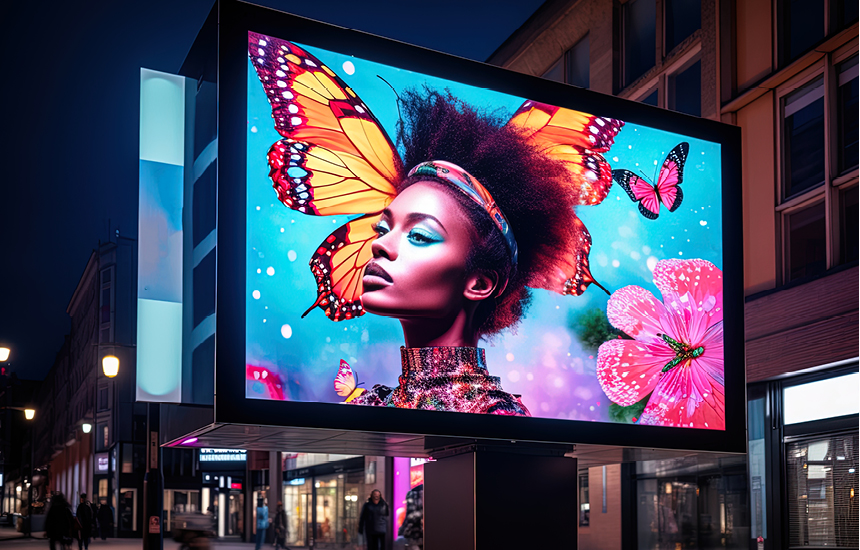Out-of-home (OOH) advertising has evolved significantly over the years, adapting to changes in technology, consumer behaviour, and urban environments. As businesses increasingly seek innovative ways to connect with their audiences, OOH advertising continues to play a crucial role in marketing strategies. This article explores the future of OOH advertising, highlighting key trends and innovations that are set to shape the landscape in the coming years.
1. Digital Transformation and Programmatic Advertising
The transition from traditional static billboards to digital displays has revolutionised OOH advertising. Digital screens offer dynamic content that can be updated in real time, allowing brands to tailor their messages based on various factors such as weather, time of day, and audience demographics.
Moreover, programmatic advertising is becoming more prevalent in the OOH space. This technology enables brands to purchase advertising space automatically, leveraging data analytics to target specific audiences more effectively. As programmatic OOH continues to grow, advertisers will benefit from enhanced targeting capabilities, improved efficiency, and increased transparency.
2. Integration of Augmented Reality (AR) and Virtual Reality (VR)
Augmented reality (AR) and virtual reality (VR) are set to redefine how brands engage with consumers through OOH advertising. These immersive technologies allow brands to create interactive experiences that capture attention and foster deeper connections.
For example, an outdoor advertising campaign might use AR to allow passersby to interact with a digital version of a product, enhancing engagement and driving interest. Similarly, VR installations can transport users to a brand’s world, providing a unique experience that encourages sharing and social media buzz.
As AR and VR technologies become more accessible, we can expect to see more brands incorporating them into their OOH advertising strategies to create memorable and impactful experiences.
3. Data-Driven Decision Making
Data analytics is becoming increasingly important in the OOH advertising space. Advertisers now have access to vast amounts of data that can inform their campaigns, from audience demographics to foot traffic patterns. This data-driven approach allows brands to make more informed decisions about where and when to place their ads, ultimately increasing the effectiveness of their campaigns.
By leveraging data analytics, brands can identify high-traffic areas, optimise ad placements, and tailor messaging to specific audiences. This not only enhances engagement but also improves return on investment (ROI) for OOH advertising campaigns.
4. Sustainability and Eco-Friendly Practices
As consumers become more environmentally conscious, brands are under pressure to adopt sustainable practices, and the OOH advertising industry is no exception. Many companies are exploring eco-friendly materials for billboards, using renewable energy sources to power digital displays, and implementing recycling initiatives for promotional materials.
Brands that prioritise sustainability in their OOH advertising campaigns can enhance their reputation and resonate with eco-conscious consumers. By demonstrating a commitment to environmental responsibility, brands can build stronger connections with their audiences and differentiate themselves in a competitive market.
5. Mobile Integration and Geolocation Targeting
With the rise of smartphones and mobile technology, brands are increasingly integrating their OOH advertising with mobile campaigns. Geolocation targeting allows advertisers to send relevant messages to consumers’ mobile devices based on their location in relation to OOH ads.
For instance, a restaurant near a billboard might send exclusive offers or promotions to consumers who are within a certain radius of the ad. This seamless integration of OOH advertising with mobile marketing creates opportunities for real-time engagement and drives foot traffic to physical locations.
6. Enhanced Customer Experience through Personalisation
Personalisation is becoming a key trend in OOH advertising as brands seek to create more tailored experiences for their audiences. By leveraging data and technology, advertisers can develop campaigns that resonate with individual preferences and behaviours.
For example, dynamic digital displays could showcase personalised content based on the demographics of viewers or previous interactions with the brand. This level of personalisation enhances the relevance of OOH advertising and encourages deeper connections between brands and consumers.
7. Innovative Formats and Locations
The future of OOH advertising will see a continued exploration of innovative formats and unique locations. Brands are experimenting with unconventional advertising spaces, such as public transport, airports, shopping malls, and even art installations, to reach their audiences in new ways.
For instance, creative campaigns might involve wrapping buses with eye-catching designs, placing ads on the backs of seats, or utilising projection mapping to turn public spaces into interactive brand experiences. These innovative formats can surprise and delight consumers, leading to increased brand awareness and engagement.
8. Integration with Other Marketing Channels
As brands adopt an omnichannel approach to marketing, integrating OOH advertising with other channels is becoming essential. Cross-channel campaigns that combine OOH with digital, social media, and influencer marketing can create a cohesive brand experience and amplify the overall impact.
For example, an OOH ad could encourage consumers to visit a brand’s social media page, where they can engage with interactive content or participate in contests. By connecting OOH advertising with other marketing efforts, brands can enhance their reach and effectiveness, ultimately driving consumer action.
Conclusion
The future of out-of-home advertising is bright, with exciting trends and innovations on the horizon. From digital transformation and data-driven decision-making to immersive technologies like AR and VR, brands have more opportunities than ever to engage with their audiences effectively.
As OOH advertising continues to evolve, brands must stay ahead of the curve by embracing these trends and adapting their strategies accordingly. By prioritising creativity, sustainability, and personalisation, businesses can leverage OOH advertising to create impactful experiences that resonate with consumers and drive results.


